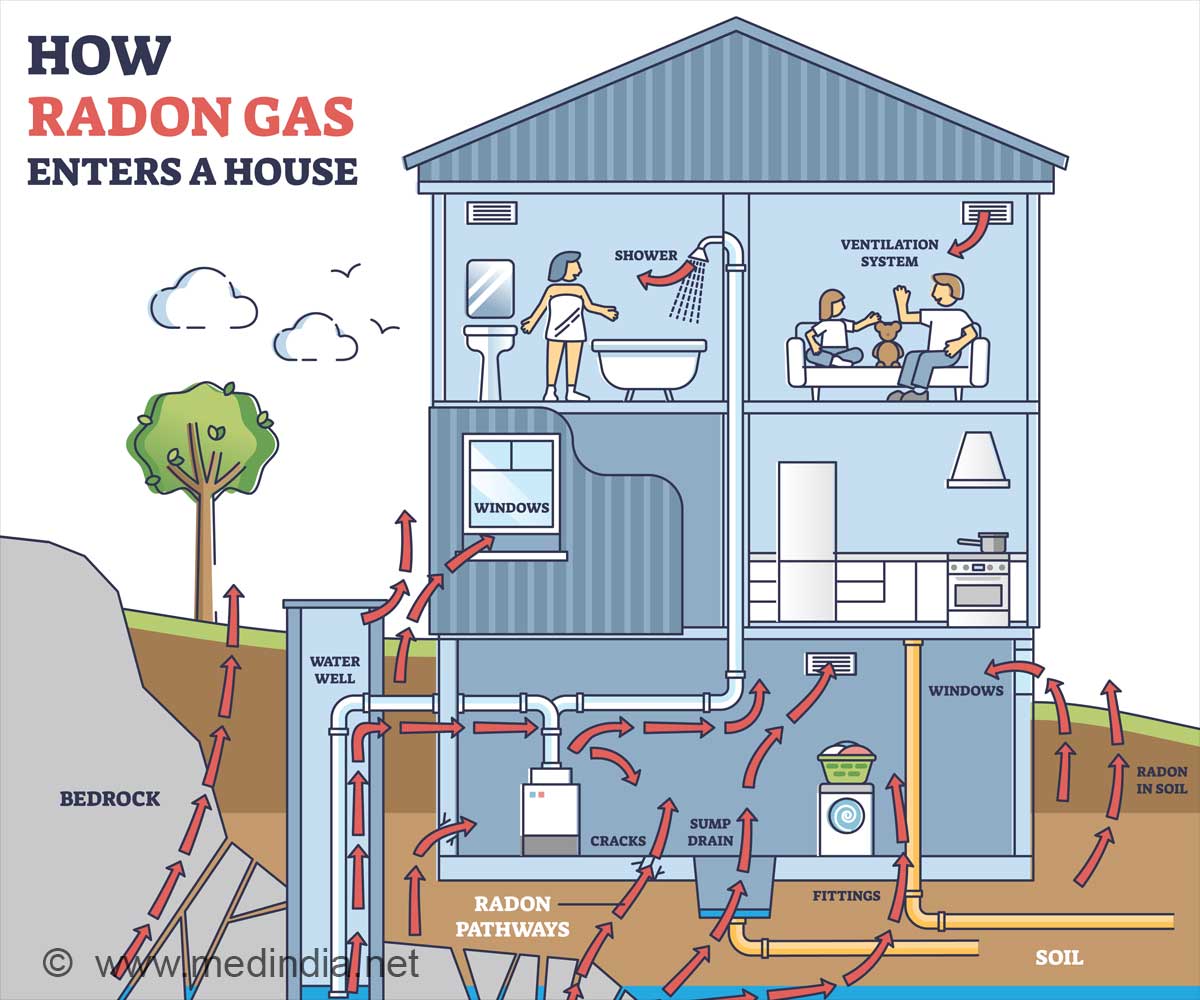Canadians are facing increased risks from radon exposure. This dangerous gas poses serious health concerns such as lung cancer.
Exposure to radioactive radon in Canada is on the rise and remains a major public health issue, according to the 2024 Cross-Canada Survey of Radon Exposure in the Residential Buildings of Urban and Rural Communities (1✔ ✔Trusted Source
Growing number of Canadian households contain dangerous levels of radon gas
).
Advertisement
Radon: The Invisible Threat to Your Lungs
There are an estimated 10.3 million Canadians living in houses with high radon, increasing their risk of developing lung cancer in the future.
The report reveals nearly 18 percent of Canadian homes contain radon levels at or above 200 Bq/m³, the threshold at which Health Canada advises action to reduce indoor radon levels. This is more than double the seven percent of households that were estimated to have radon levels at or above this limit in 2012.
“In the 12 years since we released the first Cross Canada Radon Report, evidence has continued to emerge showing that the number of high-radon homes has been increasing,” says Dr. Pawel Mekarski, Ph.D., head of the Radon Technical Operations Section for Health Canada’s National Radon Program. “The 2024 survey represents a more up-to-date snapshot of radon levels across the country, highlighting the importance of protecting Canadians from residential radon exposure.”
The coalition of researchers behind the report led by Dr. Aaron Goodarzi, Ph.D., at the University of Calgary includes scientists at Health Canada and CAREX Canada. The report defines radon exposure by specific regions, urban to rural communities and building design types. Radon is a colorless, odorless, and radioactive gas that is the second largest contributor to lung cancer worldwide.
Advertisement
Radon Exposure: A Worsening Threat to Canadian Health
“The new Cross Canada Radon Survey provides a greater understanding of how people living in Canada in the 2020s are being exposed to radon across our diverse communities, houses, and regions,” says Goodarzi, professor at the Cumming School of Medicine, and Canada Research Chair for Radiation Exposure Disease. “Alarmingly, this report concludes that Canadians are among the most highly radon-exposed people on Earth, and that means we urgently need to address this to avoid a future of prevalent but otherwise avoidable lung cancers.”
Levels of radon in houses can vary depending on local geology, when a building was constructed, and other factors such as ventilation. In the report, no areas of Canada were found to be free of high radon exposure risk, and all Canadians are urged to test where they live. Prolonged radon gas exposure is the leading cause of lung cancer among people who have had a limited tobacco smoking history or have never smoked, with the lifetime lung cancer risk increasing by 16 percent for exposure to every 100 Bq/m³ of radon.
Advertisement
Lung Cancer in Canada: A Growing Challenge
“Canada has among one of the highest rates of lung cancer globally, despite one of the lowest rates of tobacco smoking,” says Goodarzi. “Two in five cases of lung cancer diagnosed in Canada today are of a non-tobacco origin, and one of the reasons for this is our record high exposure to other potent causes of lung cancer such as radon within the indoor air where we live, work and play.”
Informed by data from the 2021 Canadian census and more than 75-thousand long-term radon readings from across Canada, key findings include:
- One in five Canadian residential buildings are at or above 200 Bq/m³
- One in three Atlantic properties are at or above 200 Bq/m³
- One in six Central properties are at or above 200 Bq/m³
- One in five Prairie and NT properties are at or above 200 Bq/m³
- One in three Pacific Interior and YT properties are at or above 200 Bq/m³
- One in 75 Pacific Coastal Canadian properties are at or above 200 Bq/m³
Findings are accessible online where every Canadian can gain a better understanding of the radon exposure risks in their communities.
Don’t let radon steal your breath away!
References:
- Growing number of Canadian households contain dangerous levels of radon gas – (https://www.ucalgary.ca/news/growing-number-canadian-households-contain-dangerous-levels-radon-gas)
Source-Eurekalert



